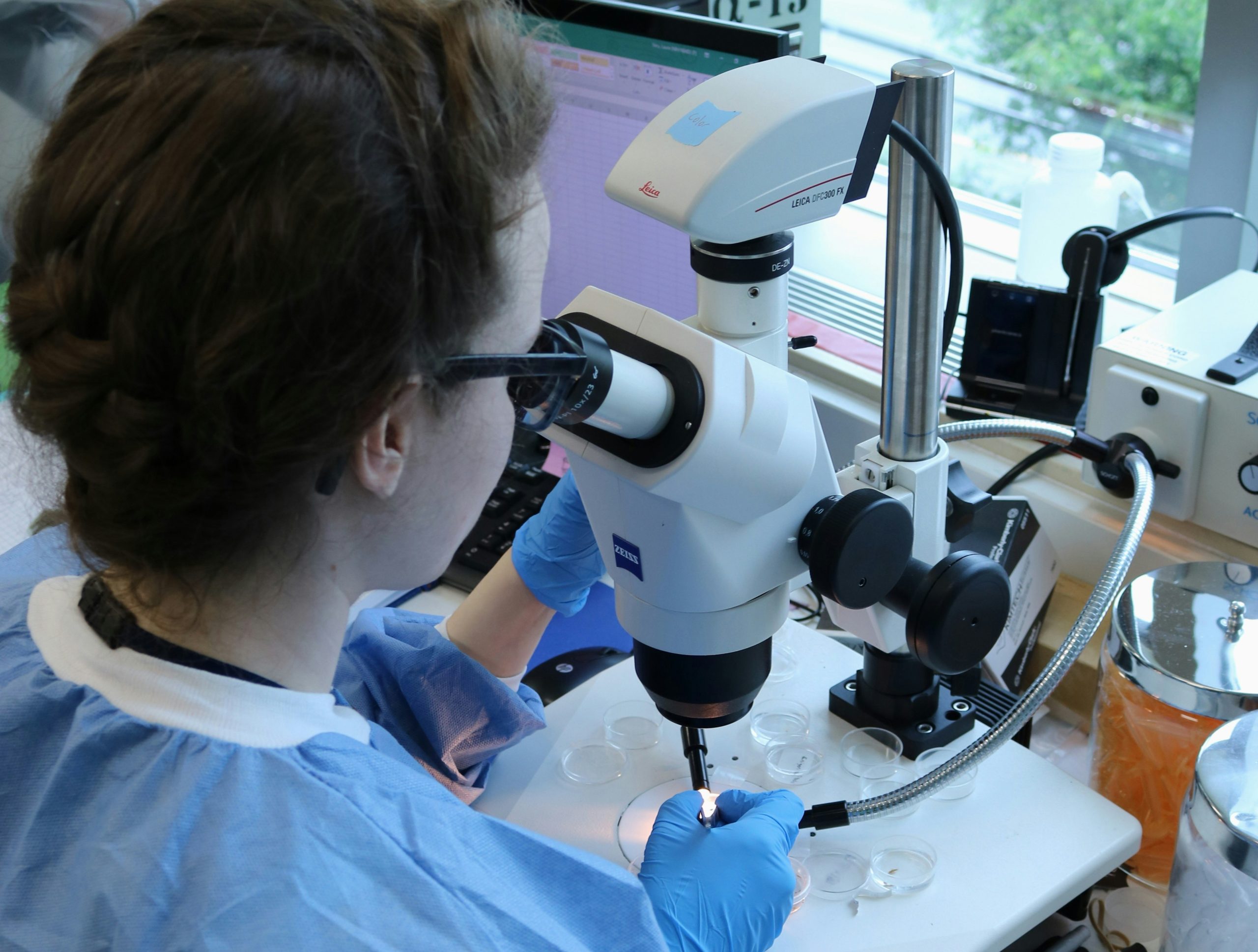Pal‑AHK (Palmitoyl‑Alanine‑Histidine‑Lysine), also known as Palmitoyl Tripeptide‑3, is a synthetic peptide of growing interest in regenerative and matrix research. Comprising a tripeptide sequence A‑H‑K linked to a palmitoyl fatty acid moiety, this compound has been investigated in various research models for its potential support for fibroblast activation, extracellular matrix renewal, vascular signaling, oxidative stress modulation, and cell survival. This article reviews the documented properties of Pal‑AHK, outlines major areas of current investigation, speculates on emerging research directions, and illustrates hypothetical research scenarios.
Introduction to Pal‑AHK
Pal‑AHK is a conjugate of the tripeptide alanine‑histidine‑lysine with a palmitoyl lipid chain. Studies suggest that this lipid attachment may support the peptide’s lipophilicity, suggesting better-supported cellular membrane traversal in research models. Research indicates that the copper‑binding potential of AHK may further support its conformational stability and receptor interaction, potentially modulating biological activity in collagen synthesis, matrix remodeling, and vascular signaling.
Given the growing industrial interest, Pal-AHK is often examined alongside other matrikine peptides in dermatological research; yet, mechanistic investigations in laboratory settings remain critical to unveil its cellular interactions and theoretical implications.
Chemical Characteristics and Biophysical Properties
The molecule has a molecular formula of C₃₁H₅₆N₆O₅ with a molecular weight of 592.8 g/mol. The palmitoyl segment is theorized to increase cell membrane partitioning, while the peptide component may bind divalent copper ions. Copper chelation may alter the redox properties or support the folding of the peptide, and thus its molecular function in cell culture systems.
Fibroblast Proliferation and Collagen‑Matrix Renewal
One of the most prominent observations involves Pal‑AHK’s potential to stimulate fibroblast proliferation in cultured dermal fibroblast lines. Using neutral red uptake and sulforhodamine B assays, exposed fibroblast populations may show better-supported cell viability and density. Concurrent measurements of collagen type I production may indicate increases up to ~300% compared to unexposed controls—a speculative indication of robust extracellular matrix synthesis support.
This possible activation of collagen pathways may be mediated through the transforming growth factor-β (TGF-β) signaling pathway. Studies suggest that Pal-AHK may support the expression or activity of TGF-β, thereby supporting matrix protein synthesis, supporting cell-cell attachment, and generally supporting structural matrix integrity.
Angiogenic Signaling and Vascular Endothelial Growth Factor Dynamics
Data from research contexts suggest that Pal-AHK may support the synthesis of vascular endothelial growth factor (VEGF), a key mediator of angiogenesis. Molecular docking simulations have suggested that the tripeptide may interact with VEGFR2, potentially modulating endothelial cell proliferation or migration pathways. This might imply a theoretical potential to support capillary‑like network formation in engineered tissue constructs or regenerating systems.
Better-supported VEGF signaling may be relevant in models of tissue repair or engineered skin cell constructs, where increased microvascularization is desirable for nutrient delivery and support of matrix regeneration.
Oxidative Stress and Antioxidant Engagement Research
Oxidative stress, often mediated by reactive oxygen species such as superoxide, is implicated in matrix degradation and impaired cellular vitality. Research indicates that Pal‑AHK may hold antioxidant properties, possibly through copper‑mediated superoxide dismutase activation. This may hypothetically reduce free radical damage in in vitro oxidative stress assays, thereby preserving cell viability and fostering matrix stability by minimizing collagen breakdown via matrix metalloproteinases (e.g., MMP‑1, MMP‑3).
Such antioxidant activity may support research into oxidative injury models, matrix preservation under stress, or hair follicle cell‐like model systems where reactive species impair structural maintenance.
Apoptosis and Cell Survival Pathways Research
Data from cultured dermal papilla cell-like systems suggest that Pal-AHK may support apoptotic regulatory pathways. Elevated expression of anti‑apoptotic Bcl‑2 and decreased levels of pro‑apoptotic Bax, along with attenuated activation of caspase‑3 and reduced PARP cleavage, may support cell survival by shifting the apoptotic threshold.
These observations suggest that Pal-AHK may support cell persistence in stressed or aging cellular model systems, including engineered tissue constructs or prolonged culture paradigms where viability preservation is crucial.
Comparative Perspective: Pal‑AHK and Related Peptides
Pal-AHK belongs to a broader class of palmitoyl-modified matrikine peptides, such as Pal-GHK (Palmitoyl Tripeptide‑1) and Pal-KTTKS (Palmitoyl Pentapeptide‑4). While Pal‑GHK is often linked with collagen upregulation and elastin matrix enhancement, Pal‑AHK seems to offer comparable matrix‐modulating properties with greater affinity for copper binding and potentially stronger apoptotic modulation due to histidine‑lysine content.
Comparative laboratory assays examining differences in ECM synthesis, oxidative resilience, and cell survival across these peptides may provide insights into sequence-specific mechanistic variations.
Conclusion
In summary, Pal-AHK is a lipid-conjugated tripeptide that has garnered considerable research interest across various domains, including extracellular matrix biology, vascular signaling, oxidative resilience, and cellular survival pathways. In research models, it is believed to stimulate fibroblast proliferation, collagen type I production, VEGF expression, antioxidant responses, and modulation of apoptosis. Comparative studies with other palmitoyl peptides may further elucidate unique functional niches.
As investigations evolve, Pal‑AHK is thought to offer a versatile tool for elucidating pathways of matrix renewal, tissue repair modeling, and ligand‑receptor interactions in in vitro systems. Its integration into engineered tissue platforms, oxidative stress paradigms, and peptide combinatorial screens may yield novel insights into cellular homeostasis and regenerative biology. Click here to learn more about the potential of these research compounds.
References
[i] Schagen, S. K. (2017). Topical peptide treatments with effective anti‑aging results. Cosmetics, 4(2), 16.
[ii] Zhao, X., et al. (2021). Collagen peptides and the related synthetic peptides. Biomedical Materials, 16, 03297.
[iii] Jariwala, N., & Knauer, J. (2022). Matrikines as mediators of tissue remodelling. Biochimica et Biophysica Acta (BBA) – Molecular Cell Research, 1869, 119032.
[iv] Pintea, A., & Maibach, H. I. (2025). Peptides: Emerging candidates for the prevention and treatment of skin aging. Journal of Cosmetic Dermatology, 24(3), 327–335.
[v] Badilli, U., et al. (2025). Current approaches in cosmeceuticals: peptides, biotics and biomimetics. Research Journal of Topical and Cosmetic Sciences, 11(2), 45–60.




